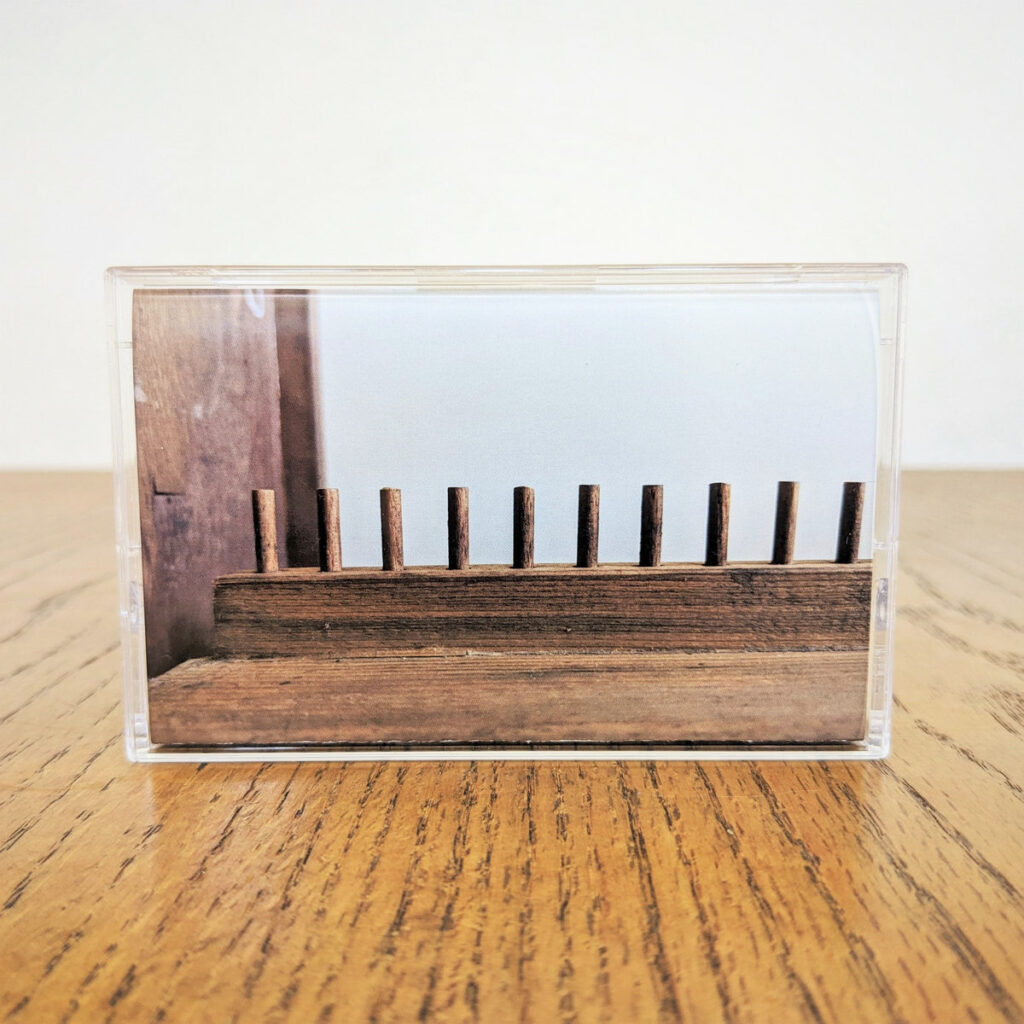Concepts of time hang heavy over this suitably titled and utterly wonderful album by Japanese home-recorder Takashi Hishigaki. The time it takes to make something you are proud of; the time it takes to truly know ourselves; how time affects how we interact with art; how we are altered by the time we a born into and as such will always respond to the art of the past differently. Time provides room for nostalgia to bloom; but nostalgia is a deceptive thing, it can act as sedative to the world weary brain but can it be trusted? Time is a matter of fact/And it’s gone and it’ll never come back. Time. It carries a lot on its shoulders. As does this beautiful and carefully crafted set of songs, released back in December 2022.
Hishigaki certainly did not rush the recording process, taking many years to get things just right, but goodness me it was time well spent. Recorded at home on hard-disk and 4-track cassette, this is music alive with the sounds of multiple worlds and eras with one foot firmly and undeniably planted in the music of the past. These are sepia-tinted sound worlds where the crackle and pop of an old gramophone recording feels reborn in subtly new and surreal ways. Inspired in some ways by working in nature, there is a warmth and sun-dappled texture at present here, where memory and brief glimpses of the past are somehow realised and frozen in time. Hishigaki spent years, ‘shirking the shadows’ as he put it, needing time to feel ready to record then share these miniature moments, but I am so glad that he did because this is such a beautiful, sensitive, yearning collection of compositions. Its 13 tracks only last for 33 minutes; this isn’t some overblown epic, which can so easily happen when obsession kicks in- here, nothing outstays its welcome, each track creating a visual shorthand for those dream-like, half-remembered images.
The hypnotic world of Yann Tiersen’s early film work is an obvious starting point but I think this a case of shared source inspiration rather than Hishigaki trying to emulate the Amelie soundtrack. The immersive, 78-emulating sound world of R Crumb & his Cheap Suit Serenaders is another reference that comes to mind – especially when oscillating, plucked strings warble and dance above these old-timey soundscapes. There is the creak and shuffle of the room present too and a rusticity to some of the instrumentation – those breathy accordion shimmers combining beautifully with often minor key banjo lines. This is just magnificent stuff.
The odd, ambient details that are included – is that a bird or an angry squeegee at one point?! – add to this strange sense of something transitory – again playing with temporal concepts. Brushed drums, tinkling xylophones and an almost parlour music seriousness pervades. Quivering violins, pulsate like a Viennese string quartet, yet all the while these familiar sounds take on an other-worldly quality. Late in Autumn changes the mood once more – a meditative acoustic guitar piece that feels at one with a rural past, painting pastoral pictures with its calming melody. When Hishigaki described, in relation to his work as a landscaper, “The time spent feeling the warm sun on my skin surrounded by nature’s green brought a newfound calm,” it makes clear sense. This bucolic immersion is echoed further in the bird song and whispering leaves throughout Camphor Tree.
A tea service seems to shuffle about during Anne and Rigged Flutter and then the echoing notes of strings gather. In this way, the experimental sound worlds of the Soundwalk Collective is brought to mind- particularly their beautiful album Sons of the Wind, especially in the snatches of distant human voices captured at the end. There is a naive innocence to some of these sounds which peaks in the song’s conclusion – pure 60s, children’s tv incidental music. I just love it. There are moments that feel like a stripped back, new-age jazz album, particularly in the subtly skittering drum work, but these feel decidedly postmodern- reminiscent of some of the more reserved early recordings of Coleen. The range of instrumentation on the album adds further intrigue, makeshift instruments, kitchenalia, junk instruments, others borrowed from friends – all of which are played across these shifting sounds with natural grace.
Unknown Steps has an almost Waitsian clatter – a child-like melody clinging to a broken waltz, or perhaps, moreover Waits’s source material – the deranged collision of Harry Partch and Kurt Weill, but much gentler, softer and illusive. Moss is the longest song on the album and is the most stately in its pacing, the moments of backwards guitar and woodwind adding to that sense of a mesmeric, half-waking world. This is hypnagogic music, the magic of the four track allowing notes to bend and warble wistfully, a sense of the dawn light catching a shadow-flecked wall through the fluttering curtains.
Hishigaki said, “I prefer the distortion that comes from vibrations in real air—after all, what sounds sweeter than the warbling of a gramophone.” Listening to Time it’s hard to think of something sounding more charming, more magical.
A dock seed can lay dormant for over fifty years before a new plant takes form; let’s hope it doesn’t take that long before the light is shone on this wonderful music, though in some ways, if it does, it would make perfect sense.
Written by M.A Welsh (Misophone)
